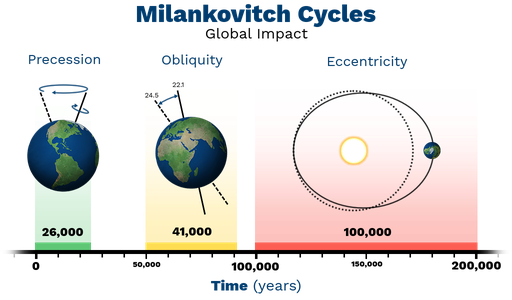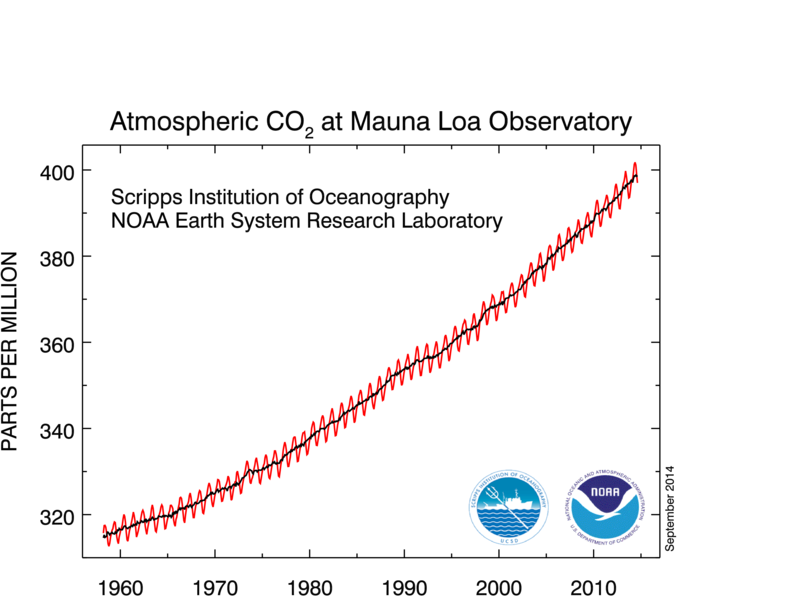Unit 4, AOS1 - Climate Change
1/57
Earn XP
Description and Tags
Earth energy balance, greenhouse effect, carbon cycle, mitigation and adaptation, impacts and decision making
Name | Mastery | Learn | Test | Matching | Spaced |
|---|
No study sessions yet.
58 Terms
Define what is meant by Earth’s Energy Budget
This refers to the overall amount of incoming solar energy (insolation) and outgoing energy emitted from the Earth’s atmosphere.
Define what is meant by Earth’s Energy Balance
The Earth’s energy budget is in balance when the amount of incoming solar energy is equivalent to the outgoing radiation emitted from the Earth’s surface. When this is balanced, global average temperatures remain stable.
Differentiate between the terms Weather and Climate
Weather describes the short-term state of the atmosphere, which can change within minutes or hours (day-to-day and seasonal changes). On the other hand, climate describes the average of long-term atmospheric conditions which changes over many years.
Define Milankovitch Cycles

Milankovitch Cycles are cyclical and predictable variations in the Earth’s orbit, wobble and tilt that influence insolation and thus the Earth’s climate in the long-term.
List and briefly outline the 3 Milankovitch Cycles
Eccentricity (orbit shape), slightly changes the length of seasons
Obliquity (tilt), the greater the tilt of the axis, the more extreme the seasons
Axial Precession (wobble), makes seasonal contrast more extreme in one hemisphere and less in the other
Identify the source and wavelength of energy that enters and leaves Earth’s atmospher
The sun emits shortwave radiation (peaking in the band of visible light), and the earth emits longwave radiation (such as infrared radiation - heat)
Define the term Atmospheric Window
A small section of the electromagnetic spectrum that allows for the longwave radiation emitted from the Earth to escape the atmosphere without being reabsorbed.
Define the term Albedo
The amount of light or radiation that a surface reflects.
Provide 2 examples each for high and low albedo surfaces
Ice and fresh snow have high albedos (reflect more light), and asphalt and water bodies have low albedos (absorb more light)
Explain the positive feedback loop of increased rates of ice and snow melting, referencing the albedo effect
As snow and ice melt, they expose darker surfaces such as rock or water that aborb more raditation. This leads to greater warming of the Earth’s surface which in turn leads to more snow and ice melting.
Identify the 2 main influences on surface ocean currents
Surface ocean currents are driven by the wind and tides. The tides draw water in and out from shores, and in the open ocean, the wind drags the top layers of the ocean with it.
Define the term Thermohaline Circulation
Thermohaline circulation is a global ocean current driven by density differences caused by temperature and salinity, transporting heat from the tropics to the poles and bringing cold water back to the equator.
Explain how differences in water density drives Thermohaline Circulation
Colder, saltier water at the poles has a high density, so it sinks and warmer surface water, which is less dense, takes its place creating vertical convection currents.
Outline how Thermohaline Circulation is threatened by climate change
Melting of sea ice at the poles dilutes the salty water, making it less dense and weakening the convection currents that drive thermohaline circulation.
Define the term Carbon Sequestration
The natural or artificial process by which carbon dioxide is removed from the atmosphere and stored.
Define the term Carbon Sinks
Sites where more carbon is stored than produced. (eg. soil, oceans, vegetation, forests and wetlands)
Differentiate the Slow and Fast carbon cycles
The slower cycling of carbon is largely through rock and sediment sequestering carbon over 100+ years. The faster cycling of carbon (<1 year) is through biological processes such as photosynthesis, cellular respiration, combustion and decomposition.
Explain how fossil fuels are formed and why they are release greehouse gases when combusted
Fossil fuels form from the remains of ancient carbon based organisms that have been buried under layers of sediment and subjected to heat and pressure. This sequestered carbon is released back into the atmosphere through combustion for energy.
List 5-8 processes within the Carbon Cycle
Photosynthesis
Respiration
Weathering and Erosion
Combustion of Fossil Fuels and Biomass
Exchange between Oceans and Atmospheres
Deforestation
Volcanic Eruptions
Decomposition of Organic Matter
Explain how volcanic activity can have both cooling and warming effects
Volcanic eruptions put greenhouse gases in the atmosphere, which can contribute to global warming in the long-term.
Volcanoes can increase the concentration of aerosols (particulate matter) in the atmosphere, which can have a cooling effect in the short term.
Define the Natural Greenhouse Effect
The natural insulating effect produced by electromagnetically unbalanced molecules in the atmosphere that are able to absorb and re-emit infrared radiation emitted by the Earth’s surface, trapping heat in the atmosphere.
Define the Enhanced Greenhouse Effect
Anthropogenic emissions enhance the greenhouse effect, are driving climate change and are impacting and disrupting natural climate-regulating processes and cycles.
Identify 6 greenhouse gases
Carbon dioxide
Methane
Nitrous oxides
Ozone
Water vapour
Chloroflourocarbons (CFCs)
Distinguish between strtospheric ozone and tropospheric (ground-level) ozone
Formed naturally through the interaction of UV radiation with oxygen and protects the Earth’s surface from harmful levels of UV radiation.
Formed from reactions between volatile organic compounds (VOCs) and nitrogen oxides.
Identify the 3 things that determine a GHGs contribution to global warming
Capacity to absorb heat
Persistence in the atmosphere
Concentration in the atmosphere
Outline what Global Warming Potential (GWP) indicates
The relative effectiveness of greenhouse gases in trapping the Earth’s heat over a certain time period. CO2, the primary anthropogenic GHG, is used as the reference gas with a GWP of one.
Atmospheric concentrations of CO2 naturally fluctuate. Why is is their current increase concerning?

The rate and scale of change since the industrial revolution is greater than at any other time in the last 800,000 years.
Explain the natural seasonal fluctuation in atmospheric CO2 shown in the below graph

This is due to CO2 exchange between photosythesising plants and the atmosphere. Since the Northern Hemisphere contains most of the Earth’s vegetation, in the summer months of the Northern Hemisphere, photosynthesis rates peak and CO2 concentrations decrease. In the winter months as plants die back, lose their leaves or die and decay, photosynthesis rates fall and CO2 concentrations increase.
Identify 3 methods of measuring changes in atmospheric gas concentrations
Paleobotany
Ice core samples
Atmospheric monitoring
Outline Paleobotany as a method of measuring atmospheric gas concentrations
Fossil evidence of past plant species distribution and abundance can be used to predict historic climates and indicate the atmospheric make-up.
Outline Ice Core sampling as a method of measuring atmospheric gas concentrations
Ice core samples contain bubbles of past atmospheres, preserved in roughly chronological layers that can be used to measure historic atmospheric conditions.
Outline Atmospheric Monitoring as a method of measuring atmospheric gas concentrations
A modern form of data collection that can measure atmospheric changes using samples or satellites to map trands and create models.
Define and outline the use of a Climate Model/Projection
Climate models are complex computer simulations that use equations to represent the processes and interactions that drive the Earth's climate to predict future trends, supported by past data.
Identify 3+ atmospheric variables that should be considered in global climate models
solar energy inputs
atmospheric GHG concentrations
land and sea ice cover
global atmospheric circulation
global ocean currents
weather patterns (temperature, pressure, wind, humidity, rainfall)
surface albedo
cloud cover
Outline how the accuracy of climate models be tested
By having models simulate past trends and comparing the results to past data collected from other accepted and comparable methods (eg. ice cores, modern instruments etc.)
Identify the 2 factors that affect the dregree of certainty
the quality of the evidence
the level of agreement between different scientists
Define the term Mitigation (in the context of climate change)
Mitigation means avoiding and reducing GHG emissions and other human activities that exacerbate climate change, to prevent the planet from more extreme warming.
Define the term Adaptation (in the context of climate change)
Adaptation means altering our behaviour, systems or ways of life to protect global communities, economies and environments, from the impacts of climate change.
Outline why implementing both Mitigation and Adaptation strategies is necessary
If GHG emissions ceased today, the Earth would experience around 0.6oC of warming. Thus adaptations to a warmer climate will be necessary. To make adaptation easier and to prevent worse warming, mitigation strategies are necessary to slow the rate of warming.
Mitigation, Adaptation or Both: designing and locating buildings to have increased fire and cyclone resistance
Adaptation
Mitigation, Adaptation or Both: replacing fossil fuels with nuclear power plants
Mitigation
Mitigation, Adaptation or Both: establishing urban forests
Mitigation
Mitigation, Adaptation or Both: promoting and eating plant-rich diets
Mitigation
Mitigation, Adaptation or Both: studying crops and genetic modification technology
Both
Mitigation, Adaptation or Both: raising homes above ground level in coastal communities
Adaptation
Mitigation, Adaptation or Both: switching to renewable electricity sources
Mitigation
Mitigation, Adaptation or Both: using public transport over private vehicles
Mitigation
Mitigation, Adaptation or Both: planting raingardens to manage stormwater and peak flow
Both
Mitigation, Adaptation or Both: planning evacuatation routes and setting up shelters in case of natural disasters
Adaptation
Identify 3 different ways of judging countries level of responsibility for climate change action
The countries that have the highest current emission are responsible
The countries that have the highest cumulative emissions are responsible
The countries that have the hoghest per capita emissions are responsible
Identify 3 against high-income countries imposing low-emission laws/budgets
Low-income countries do not have the infrastructure and access to renewable alternatives to reduce GHG emissions
‘Lifestyle’ emissions vs emissions for survival or industrial processes that hihgh-income countries benefit from
High-income countries have industrialised and grown their econmies without restraint and then restrict the ability of developing countries to do the same.
Briefly outline the purpose of the Kyoto Protocol
An international agreement to take measures to stabilise GHG emissions and concentrations levels that would avoid serious climate change.
Outline how the Kyoto Protocal aimed to lower global emissions
(HINT: carbon trading scheme)
The agreement allocated an emissions allowance for each country. Countries that emitted less than their allocation could sell units to countries that had exceeded their allowance, establshing a carbon trading scheme.
Briefly outline the purpose of the Paris Agreement
(HINT: global warming targets)
A legally binding international treaty that aims to limit global warming to well below 2oC above pre-industrial levels, with a preferred target of 1.5oC.
Define the term Carbon Neutral
When carbon emissions are balanced with reductions.
Define the term Carbon Offsetting
Balancing carbon emission produced with carbon reductions by supporting carbon reductions elsewhere or removing emissions through sequestration (eg. planting forests or carbon capture)
Define the term Net Zero
Balancing emissions produced with emissions removed from the atmosphere for all greenhouse gases, not just carbon. Prioritises emission reduction over reliance on offsetting.
Define the term Carbon Taxing
When a government sets a price polluters pay per tonne of GHG emissions produced (eg. tonnes of CO2 or CO2 equivalent).